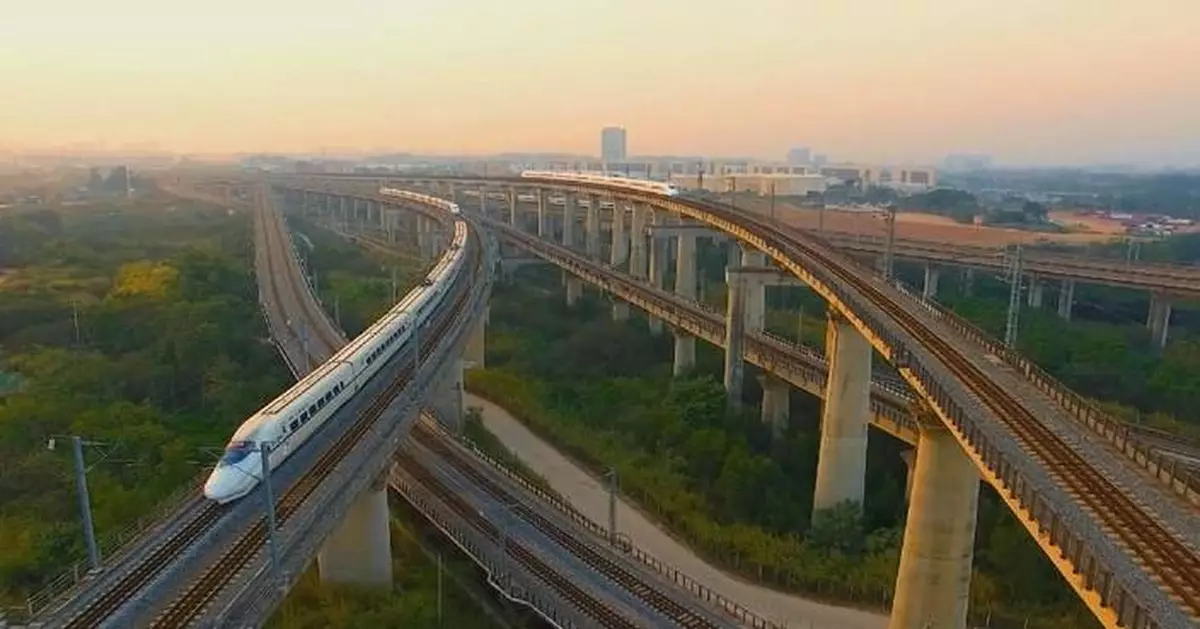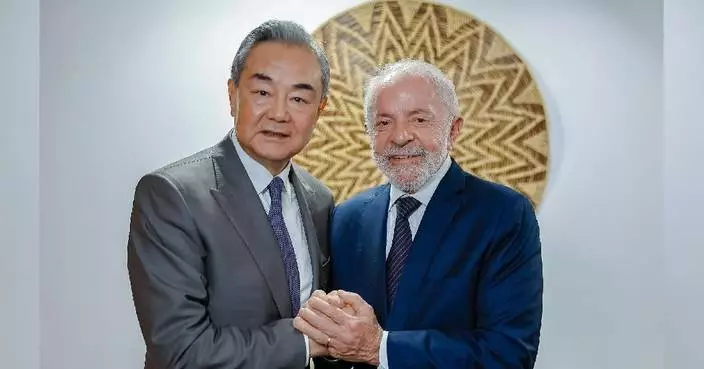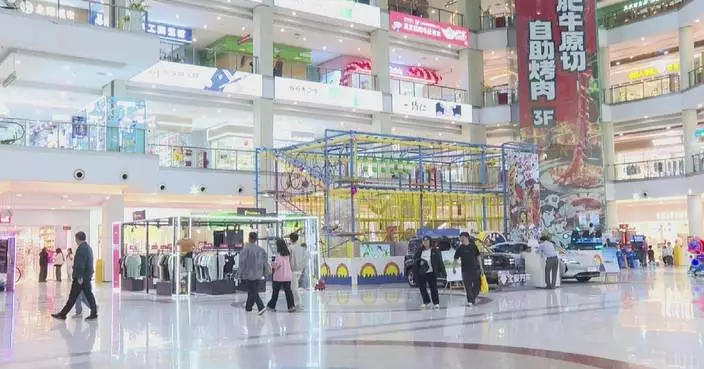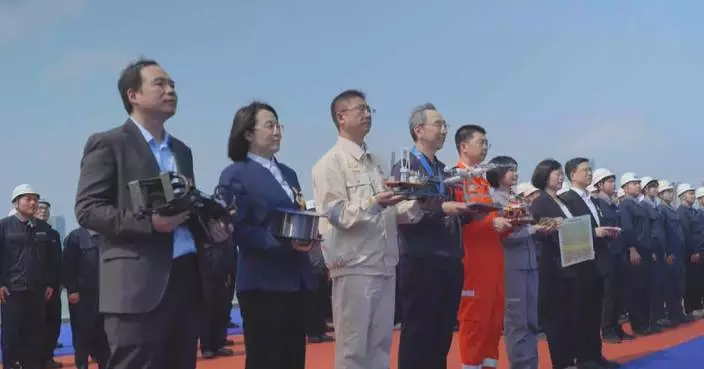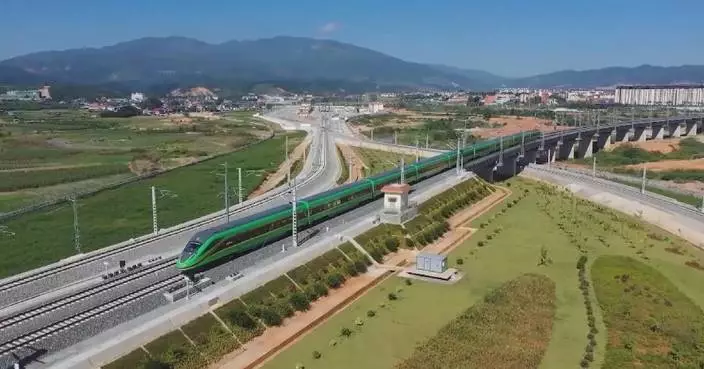Low-carbon railway innovations play a crucial role in advancing China's sustainable development goals, said Sun Yongcai, chairman of CRRC Corporation Limited (CRRC), China's leading train maker.
As China pushes for a greener future, railway transportation is playing a pivotal role in cutting carbon emissions, highlighted by breakthroughs in hydrogen-powered urban trains, said Sun in an interview with China Global Television Network (CGTN) in Beijing.
"In March 2024, China's first hydrogen-powered urban train, independently developed by CRRC, completed a full-system, multi-scenario performance test at a speed of 160 kilometers per hour. This marks a major breakthrough in hydrogen technology for rail transportation. The hydrogen train emits only water vapor, significantly reducing carbon emissions and air pollution in urban transit. What's more, local governments have shown strong policy support for hydrogen-powered rail projects, with cities like Chengdu, Foshan, Qingdao, and Changchun including hydrogen applications in their 14th Five-Year Plans," said Sun.
China has been making concrete strides toward its goal of peaking carbon emissions before 2030 and achieving carbon neutrality by 2060.
In alignment with the country's green transition, CRRC has set ambitious carbon neutrality targets.
"CRRC Group has set clear carbon neutrality targets, aiming for operational carbon neutrality by 2035 and full value-chain carbon neutrality by 2050. We are establishing low-carbon supply chain management standards, encouraging suppliers to adopt green practices, and driving innovation in sustainable technology. By focusing on green development, we aim to push China's rail transit manufacturing industry toward the higher end of the value chain," said Sun.
Beyond energy efficiency, CRRC is also enhancing passenger experience through technological innovation, said Sun.
"On December 16, 2024, Guangzhou Metro unveiled its latest green urban rail vehicle, featuring 38 industry-leading technologies. Compared to traditional trains, this new model improves energy efficiency by over 15 percent. Attention to detail has enhanced passenger convenience and comfort. For example, the recently designed express metro train for Chongqing's Line 15 features airtight sliding doors for a very quieter ride. With an advanced air purification system, it also ensures high air quality. As rail transit continues to evolve, we can envision a future where it not only offers convenience and comfort but also serves as a green link connecting urban sustainability and public well-being," said Sun.
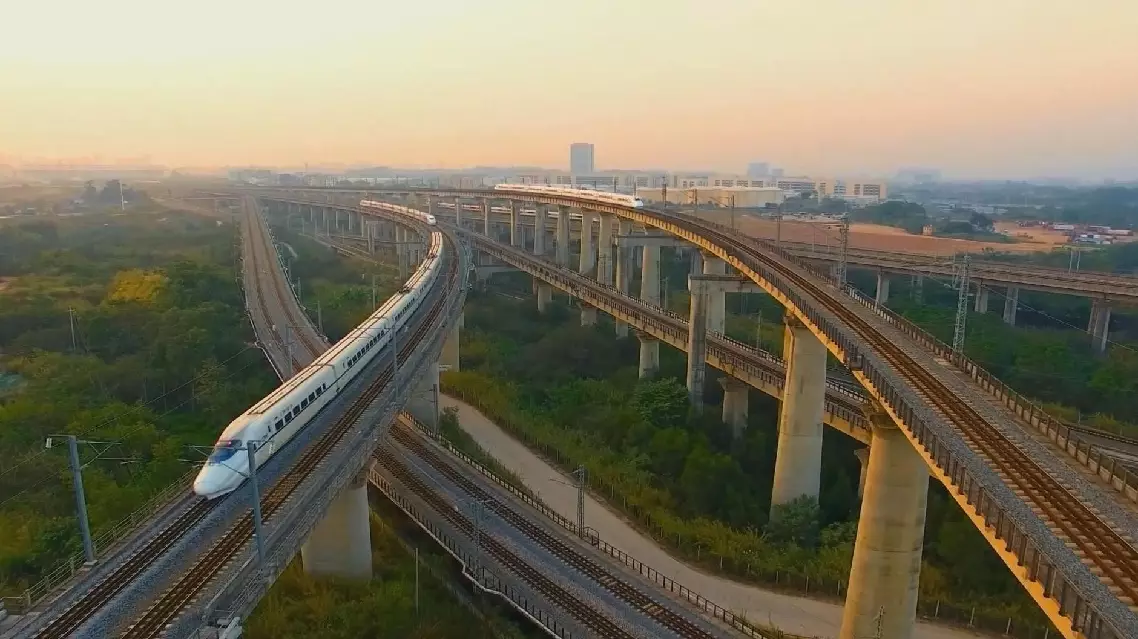
Low-carbon railway innovations drive China's green development: CRRC chairman
U.S. tariffs on Cambodia, which were set at 49 percent, have sparked concerns among the Southeast Asian country's key export industries such as garment manufacturing amid the ensuing economic uncertainties.
On April 2, U.S. President Donald Trump announced the 49 percent "reciprocal tariff" on goods imported from Cambodia, the highest among all countries. Days later, the U.S. reduced the so-called "reciprocal tariff" to 10 percent for 90 days, offering a window period to Cambodia for negotiations with it.
Cambodian businesspeople say the tariffs have the potential to wreak havoc on the country's manufacturing sector, which, according to data from the World Bank, makes up around a fifth of the country's GDP.
"For U.S. manufacturers, definitely, there will be a big impact. If manufacturers are focusing on U.S. products, they are now in the middle. They don't know what they should do at the moment because the tariff now from Cambodia to the U.S. is actually quite high," said Dr. Ben Li, a Hong Kong investor in Cambodia and Chairman of the Cambodia Chinese Commerce Association.
Nevertheless, Li sees the tariff hike as an opportunity to export more Cambodian goods to the European Union, where a majority of Cambodian exports enjoy duty-free status.
"I always say there will be a light (at the end of the tunnel.) Even now, the U.S. tariff is so high, it's going to be so high after 90 days, we don't know. But, there's still a big market to Japan or to the European Union. There's still a big opportunity there," he said.
The Cambodian investor also believes the development of major infrastructure projects will help support Cambodia's economy.
"Especially the new canal and then the new airport, and the railways which connect to China. I believe once the logistics and infrastructure are built up, it can help the whole country's economy. By reducing the transportation costs, it can also mitigate the tariff costs," he said.
Cambodia and the U.S. held their first tariff negotiations on April 16, with more expected to follow. Local experts said the stakes are high for the country's workers.
"If this negotiation fails, there will be a significant impact. It will include the garment and travel goods sector. These sectors consist of about 1,068 factories and 930,000 workers. The income generated from these sectors is about 3 billion dollars per year. So it would significantly impact Cambodia's economy, jobs and incomes," said Chey Tech, a socio-economic research and development consultant from Dynamic Alliance Consulting.
Despite the potential risks, Tech expressed his optimism about a positive outcome, citing Cambodian Prime Minister Hun Manat's letter to Trump on April 4.
"The Prime Minister's letter confirmed that Cambodia would reduce the tariff rate for U.S. goods to 5 percent. Second, Cambodia is the least developed country. Third, Cambodia produces goods that the developed countries won't produce. We asked whether the U.S. would be able to produce these low-cost products. It cannot," said Tech.
In 2024, Cambodia exported goods of 9.9 billion dollars to the U.S., making it the country's largest market, accounting for 37 percent of Cambodia's total exports.

49-percent US tariffs sparks worry among Cambodia's key export industries



